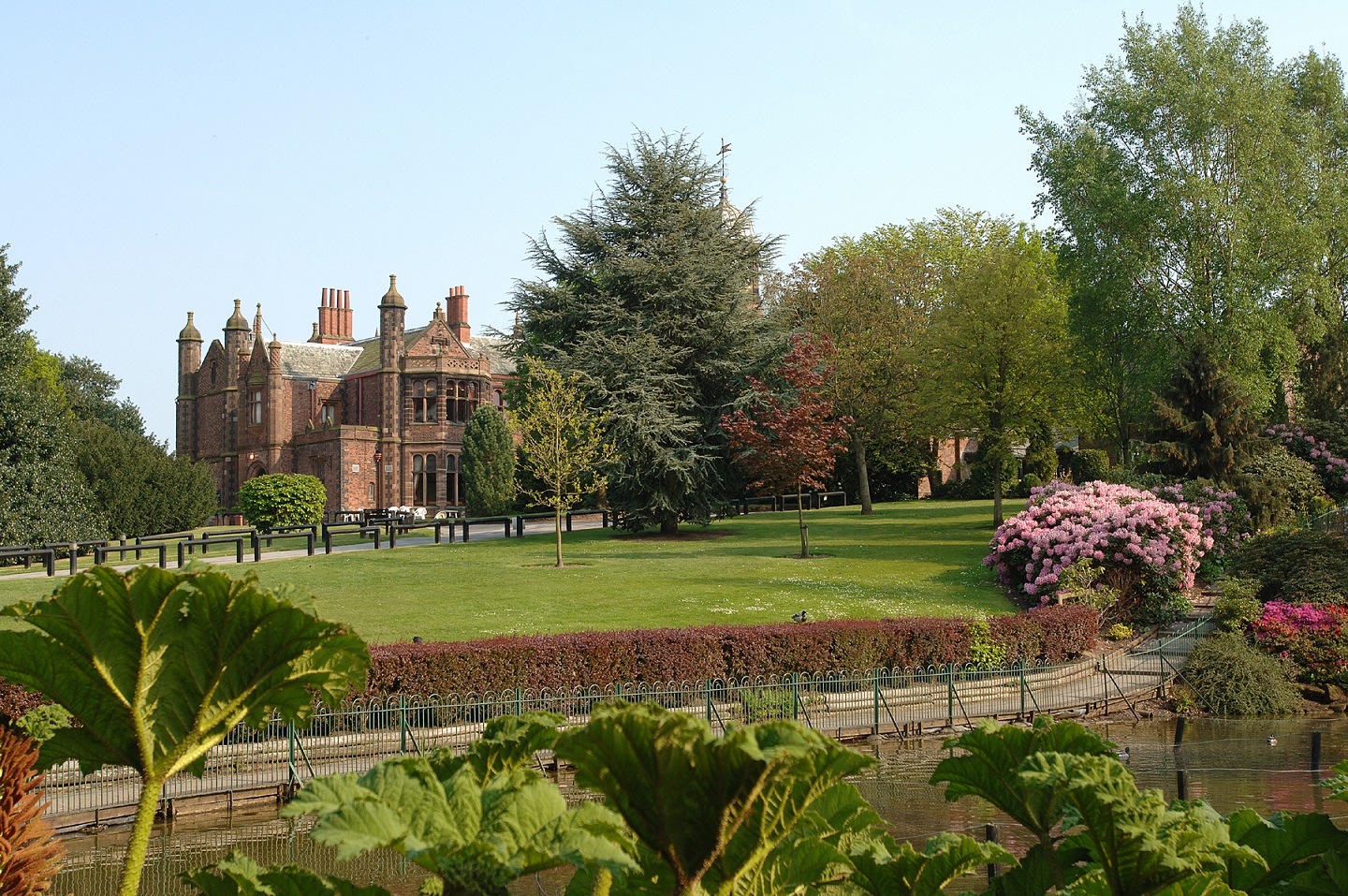A town at a crossroads, Warrington’s location has for 2,000 years helped to shape its rich heritage. A Roman road crossed the river here, then in medieval times a bridge brought trade to its market. A place with such ancient roots, Warrington marked the 50th anniversary as a New Town in 2018.
Our heritage
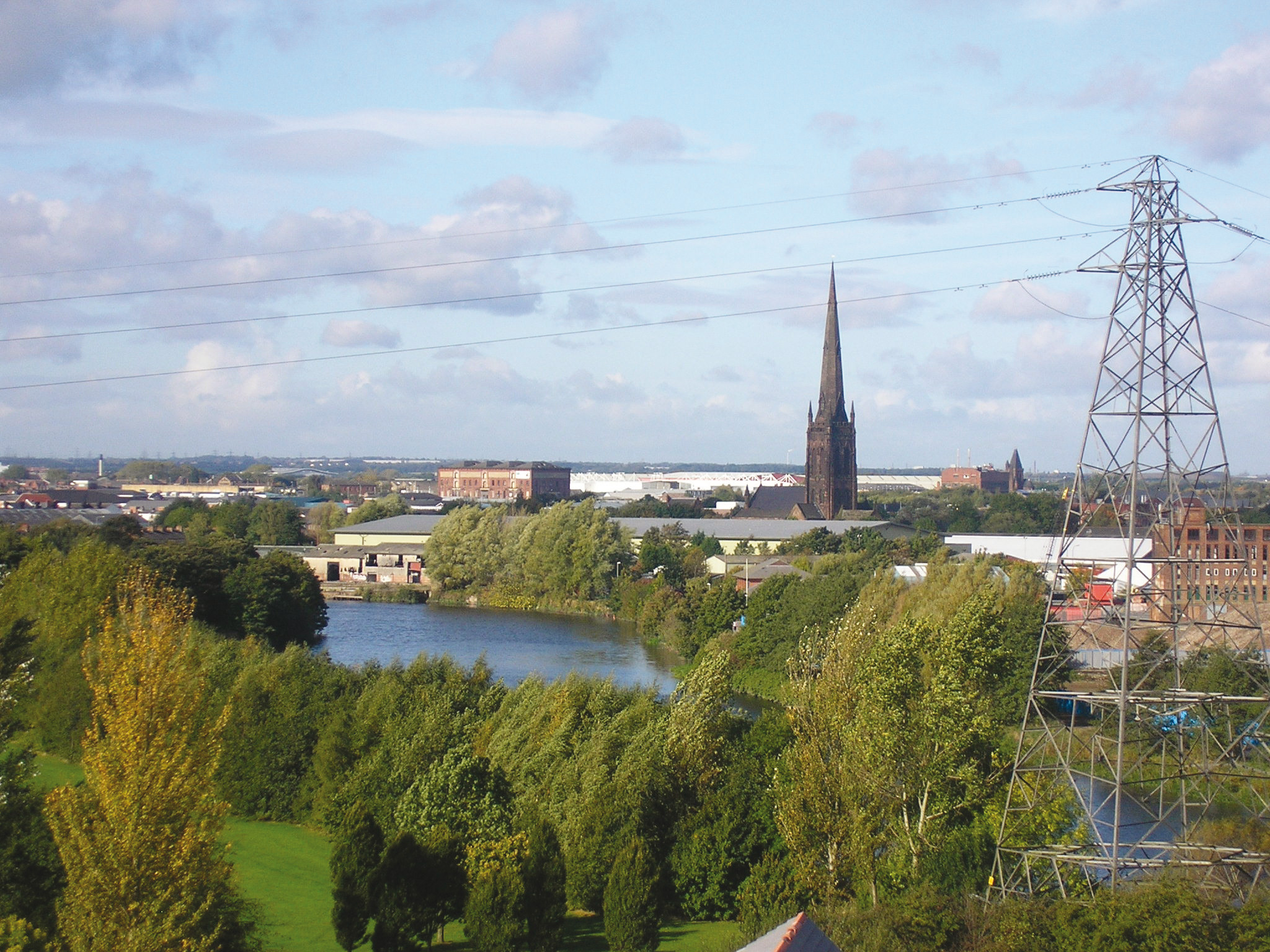
A view of Warrington
The magnificent Cultural Quarter is centred on the Palmyra Square conservation area. The Cultural Quarter incorporates the Museum, Parr Hall and Pyramid Arts Centre as well as some of Warrington’s best preserved 19th century buildings.
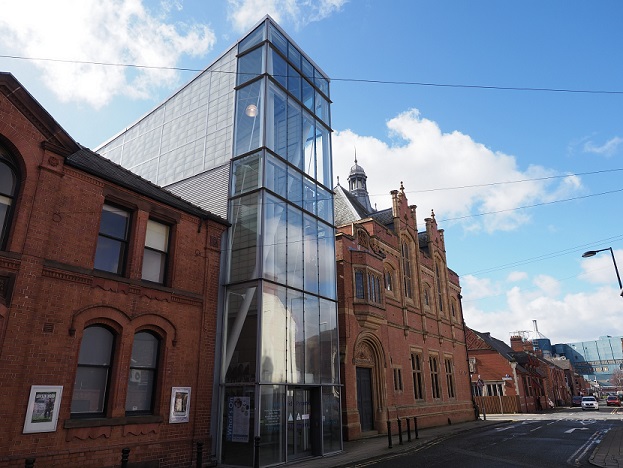
The Pyramid and Parr Hall
Designed by James Gibbs for Thomas Parr and previously known as ‘Bank Hall’, the building became Warrington’s Town Hall in 1872. The recently restored Grade II Listed Golden Gates date from before 1895 and are a significant part of the Town Hall Conservation Area.
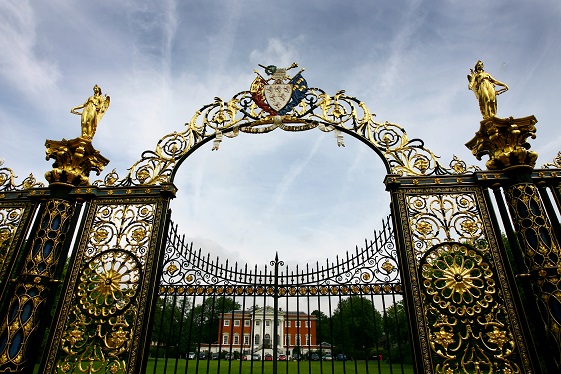
The Town Hall and Golden Gates
RAF Burtonwood was the largest military airbase in the UK during World War Two and was responsible for the handling of more than 15,000 aircraft of the United States 8th, 9th, 12th and 15th Air Forces. These forces covered the geographical area of the UK, Europe, Mediterranean and the Middle East. Built as an RAF Base, Burtonwood opened in April 1940 just in time to supply Spitfires to the Battle of Britain. Around 18,500 US servicemen and women were based at Burtonwood, which played a significant role in the Berlin Air Lift.
The RAF Burtonwood Heritage Centre, situated on the car park of Gulliver’s World Theme Park which is part of the former airbase site, is a dedicated ‘living history’ of life on the airbase. Exhibits include aircraft, stories of GI brides and artefacts representing everyday life on the airbase.
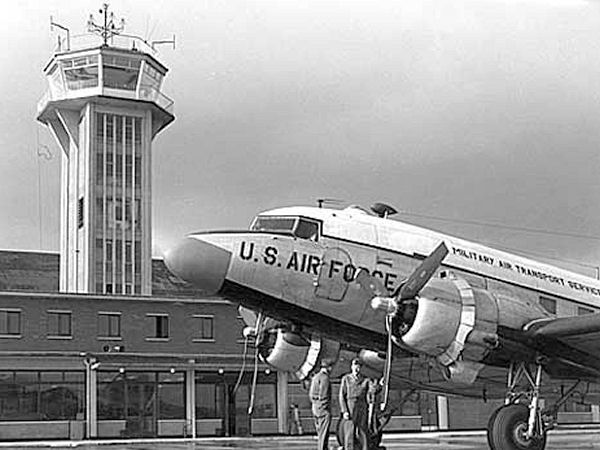
RAF Burtonwood
Warrington is a rugby town and the history of the Warrington Wolves (also known as “The Wire”) is synonymous with the borough. Founded in 1876, they are one of the original 22 clubs that formed the Northern Rugby Football Union in 1895.
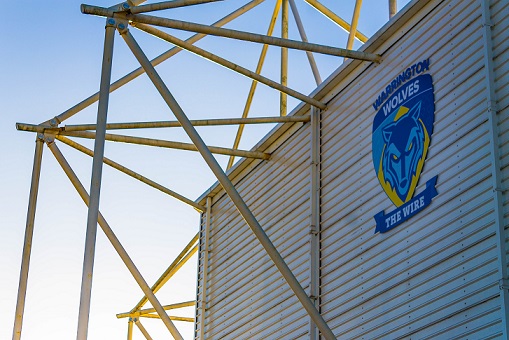
The Halliwell Jones stadium
Much of our history rests on the fact that Warrington is a crossing point over the River Mersey and, more recently, the Manchester Ship Canal. The Warrington Transporter Bridge, built in 1915, still stands across the River Mersey. Also known as Bank Quay Transporter Bridge or Crosfield's Transporter Bridge, it is a steel transporter bridge with a span of 200 feet (61 metres), 30 feet wide (nine metres), and 76 feet (23metres) above high water level, with an overall length of 339 feet (103 metres). It was built in 1915 and, although it has been out of use since about 1964, it is still standing. It was designed by William Henry Hunter and built by William Arrol and Co.
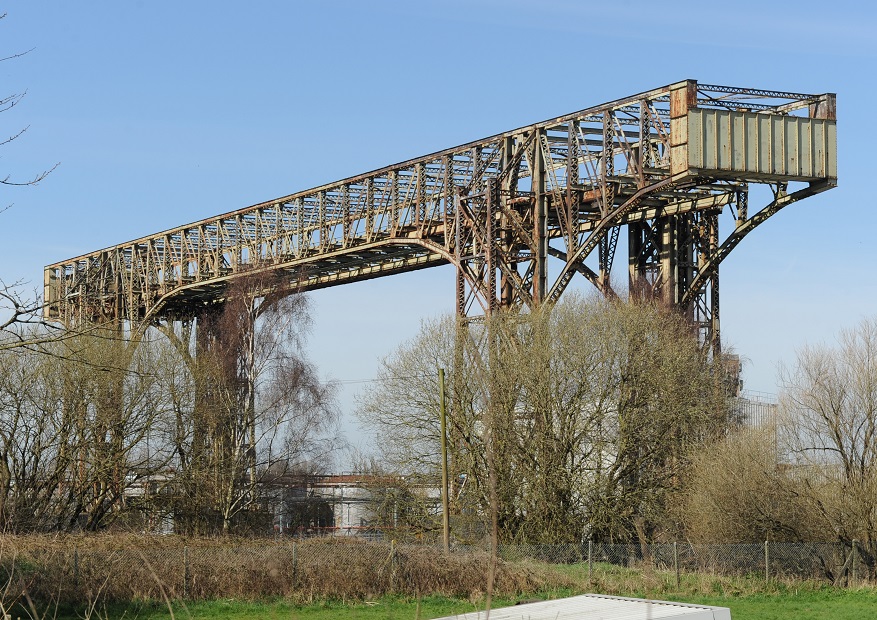
The transporter bridge
Warrington was historically known for its wire production and while the industry has largely vanished from Warrington now the wire-pullers and the manufacturers who employed them have left their mark on the town.
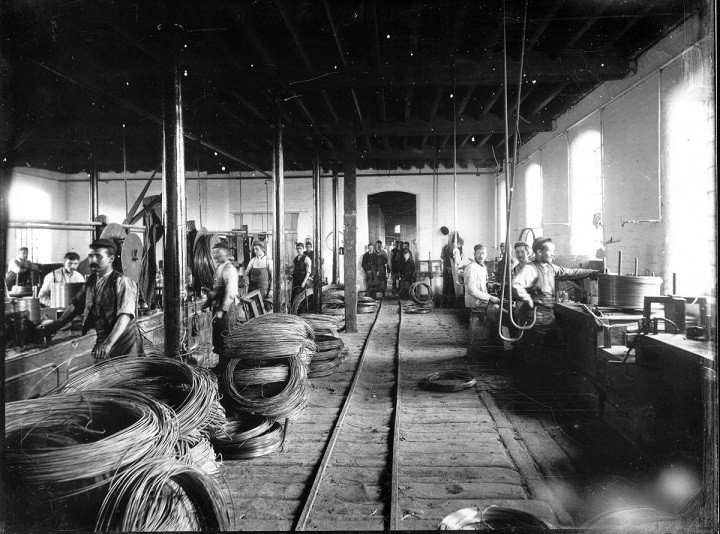
After wire manufacture, brewing was probably Warrington’s most important industry with large companies such as Greenall's dominating a number of smaller breweries.
Generating electricity since 1973, at full capacity the station consumes 16,000 tonnes of coal and 195,000,000 litres of water every day. One of a dwindling number of coal-fired power stations in the UK it is due to close in 2020.
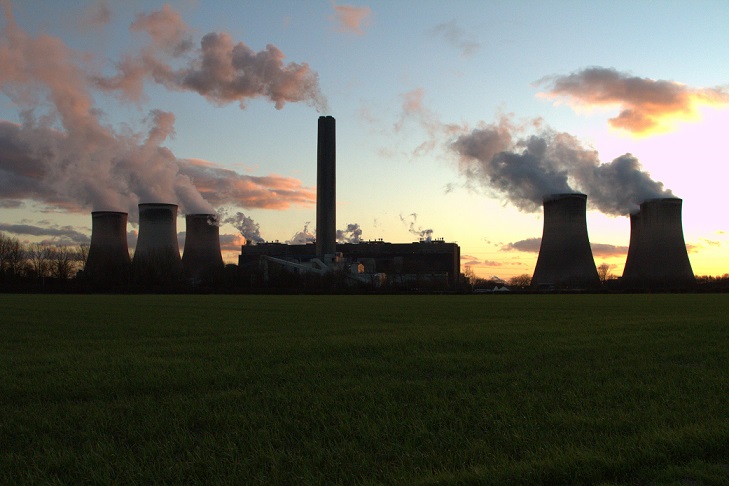
Fiddlers Ferry
Lymm is a picturesque village in the South East of Warrington. The northern boundary of the parish was altered in 1933 to follow the course of the Manchester Ship Canal. The Bridgewater Canal also passes through Lymm - an important transportation link during the 19th century. Once a parish of Old Bucklow Hundred, the township of Lymm is mentioned in the Domesday Book of 1086.
Lymm Cross is a designated Grade I listed 17th century sandstone cross that is also the focal point of the historic village of Lymm.
Lymm Heritage Centre, in the heart of the village, celebrates the trades, transport and traditions of this Cheshire village that appeared in the Domesday Book. Visitors can enjoy a range of ever-changing exhibits that tell the story of the fustian cutting, gold beating and salt extraction industries.
Using models, maps and interactive exhibits the Centre explores the impact of not one but two canals on the development of the village as well as giving a flavour of Lymm’s many traditional events including May Queen and Rushbearing .
Lymm Historic Transport Day on the fourth Sunday in June celebrates the village’s fascinating Transport Heritage. In the run up to the event itself over 200 youngsters take part in half day “We Love Our Canal” sessions that introduce key stage two children to the importance of the Bridgewater Canal to the development of the village. On the day itself the whole village is given over to historic working boats, traction engines, vintage bicycles, classics cars, planes and other vehicles that help recreate the heyday of these many forms of transport. Vintage buses transport the thousands of visitors to and from the village centre.
Lymm Rushbearing - an annual event in Lymm in which rushes are collected, carried to the Parish Church and spread upon the floor.
Lymm Festival takes place each summer and hosts a range of events to suit everyone, from children, through the teenage years and families, to the more mature members of the public. The programme includes music, poetry, drama, literature, heritage and outdoor events.
Lymm Duck Race is held each year on Easter Monday at 12:30pm, when around a thousand yellow racing rubber ducks are launched into Lymm Dingle, cheered on by the crowds. All profits after event and club running costs go to charities and local community groups.
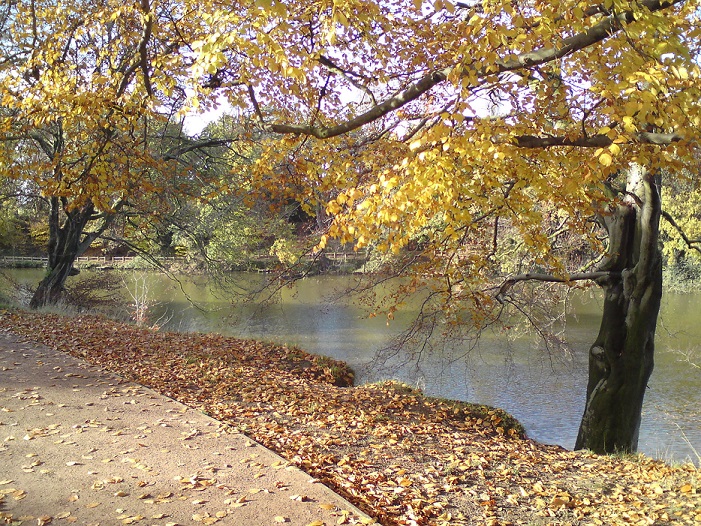
Lymm Dam
Built in the 1830s by the Greenall brewery family, Walton Hall and Gardens was a traditional Victorian estate with a decorative pond, formal gardens, hall, glasshouses and animal management facilities.
We bought the estate in 1941 and it has been open to the public for over 75 years and continues to be a much-loved leisure destination.
Find out more about the estate on Walton Hall and Garden's website.
